Nothing is worse than a dry and bland chicken. You know the type—every bite feels like you’re nibbling on cardboard. Fortunately, there’s a culinary method that guarantees a juicy, tasty chicken every time: bringing. In this article, I’ll lead you through the process of creating the ideal chicken brine recipe. Brining can transform your chicken from mediocre to exquisite, whether you’re preparing for a roast, barbecue, or weeknight meal.
What is the definition of brining?
To put it simply, brining is the process of soaking your chicken (or any meat) in a salty solution before cooking. It’s similar to giving your chicken a bath, but this one genuinely improves its flavor and texture. The saltwater aids the meat in absorbing additional moisture, resulting in a luscious bite every time.
Why Should You Brine Your Chicken?
Let’s be honest: chicken isn’t the most enticing protein option. However, bringing it causes your chicken’s personality to change. It’s suddenly flavorful, juicy, and tender. No more dry, unsatisfactory bites! Brining your chicken guarantees that it stays moist whether grilling, frying, or roasting. Furthermore, it’s a failsafe approach to prevent this dreaded rubbery chicken tragedy.
The Science Behind Brining
This may sound like chemistry class, but stick with me—it’s actually cool! Brining works by osmosis. When the chicken is in the brine, the saltwater draws moisture into the meat’s cells. The chicken not only absorbs water, but also part of the salty deliciousness, which enhances its flavor.
Consider brining like taking your chicken to a spa retreat—it comes out moisturized, revitalized, and happy.

Key Ingredients in a Simple Chicken Brine Recipe
- You do not need anything extravagant to get started. In reality, the majority of these components are most likely already in your kitchen. Here’s everything you’ll need:
- Water is the base of your brine. Make sure it is cold.
- Salt, the star of the show! Kosher salt works best due to its gritty texture.
- Sugar (optional but preferred) – It balances out the salt and gives a hint of sweetness.
- Spices and herbs include black peppercorns, garlic cloves, bay leaves, and other flavors you enjoy.
Step-by-Step Chicken Brine Recipe
Now, let’s get to the good stuff—here’s how to make a quick and effective chicken brine in just a few minutes.
Ingredients:
- 4 cups of water.
- 1/4 cup kosher salt.
- 2 tablespoons sugar.
- 1 tablespoon black peppercorns.
- 2 garlic cloves, mashed
- 2 bay leaves.
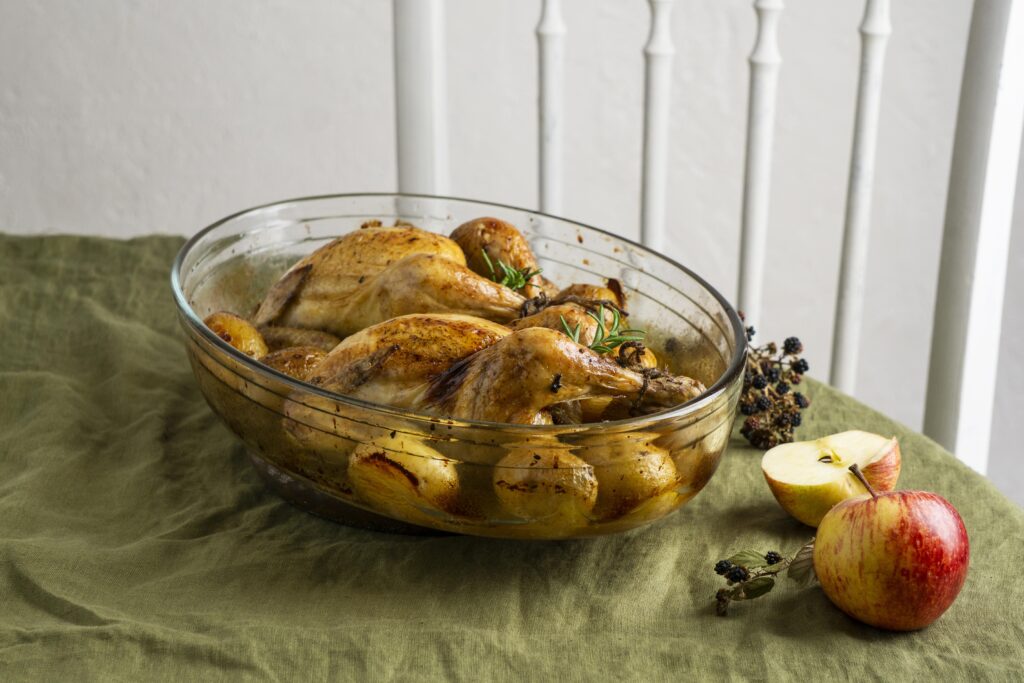
Instructions:
Heat the water: Pour half of the water into a big pot and heat to a gentle simmer.
Add the kosher salt and sugar to the water and mix until dissolved.
Toss in the peppercorns, garlic, and bay leaves for added flavor.
Cool the brine: Remove the pot from the heat and add the remaining cold water to cool the solution. (An important tip:You do not want to boil your chicken in hot brine!
Brine the chicken: Immerse the chicken (whole or in pieces) in the brine. Cover and refrigerate.
Voila! Your chicken is about to become delightfully juicy.
Brine: Wet vs. Dry
While we’ve been talking about wet brining, there’s another approach called dry brining. Instead of soaking the chicken in liquid, rub it with salt and refrigerate it. Both methods work well, however wet brining is better when you want to add more moisture.
Best time for bring chicken
Timing is crucial! For tiny cuts such as chicken breasts or thighs, bringing for 30 minutes to 2 hours is sufficient. For a full chicken, cook for 4 to 8 hours. Just don’t leave it in there too long or you’ll wind up with an overly salty mess!
How long should you brine chicken?
To keep it simple:
Chicken breasts: 30 minutes to an hour.
Chicken thighs: 1–2 hours
Whole chicken: 4–8 hours
If you’re feeling daring, you could even brine overnight. Just make sure to rinse off any excess salt before cooking, unless you prefer your chicken particularly salty.
Common Mistakes to Avoid while Brining
Brining is a simple process, but a few frequent problems might throw things off:
Over-brining: If you leave your chicken in the brine for too long, it may become overly salty.
Failure to cool the brine: Putting chicken in warm brine is a surefire method to cause food safety issues.
Skipping the rinse: After brining, rinse the chicken to eliminate any extra salt.
Avoid these blunders and you’ll be OK!
How to Customize Your Chicken Brine Recipe
One of the most appealing aspects of brining is its ease of customization. Want some heat? Toss in some chili flakes. Looking for a tangy kick? Mix in a splash of apple cider vinegar or lemon juice. When it comes to taste add-ons, the possibilities are endless.
Flavor Enhancements for the Ultimate Chicken Brine.
Citrus: Lemon or orange slices can enhance the flavor.
Fresh herbs like rosemary, thyme, and parsley perform miracles.
Spices like cumin, paprika, and coriander provide richness.
Sweeteners: You can add honey or maple syrup to your brine to make it sweet.
Mix & mix to create your ideal blend!
Cooking Brined Chicken: Pro Tips
After bringing your chicken, it’s time to cook it. Here are some pointers.
Pat it dry. Pat your chicken dry before cooking to achieve a crispy, golden skin.
Adjust the seasoning: Because the chicken has absorbed some salt, use a little salt when seasoning before cooking.
Cook to temperature: Always use a meat thermometer to make sure your chicken reaches 165°F.
Can You Brine Chicken for Too Long?
Short answer: yes. Overbrining might result in overly salty chicken and a mushy texture (yikes!). Stay within the recommended times, and you’ll be alright.
Brining for grilling versus roasting
Brining is a game changer when it comes to grilling or roasting chicken. Brining the chicken before grilling helps it stay moist even in high heat. Roasting guarantees consistent cooking and a tender interior.
Conclusion and final thoughts.
Brining chicken may appear to be an extra step, but believe me—it is completely worth it. It’s like giving your chicken superpowers: it’ll turn out juicier, more flavorful, and simply amazing. Once you begin brining, you will wonder how you ever cooked chicken without it!
FAQs:
1. Do I need to use kosher salt?
- Kosher salt is recommended due to its coarse texture, but table salt can be used in a pinch—just use half the quantity!
2. Can I reuse the brine?
- No, after brine has been used on raw chicken, it should be destroyed to prevent contamination.
3. Should I refrigerate the chicken while it brines?
- Absolutely! To maintain a safe temperature, always brine your chicken in the refrigerator.
4. What are the differences between brining and marinating?
- Brining concentrates on moisture and salt absorption, whereas marinating is all about integrating flavors into the meat.
5. Can I brine meats other than chicken?
- Yes! Brining is beneficial for pork, turkey, and even shrimp. Give it a try!
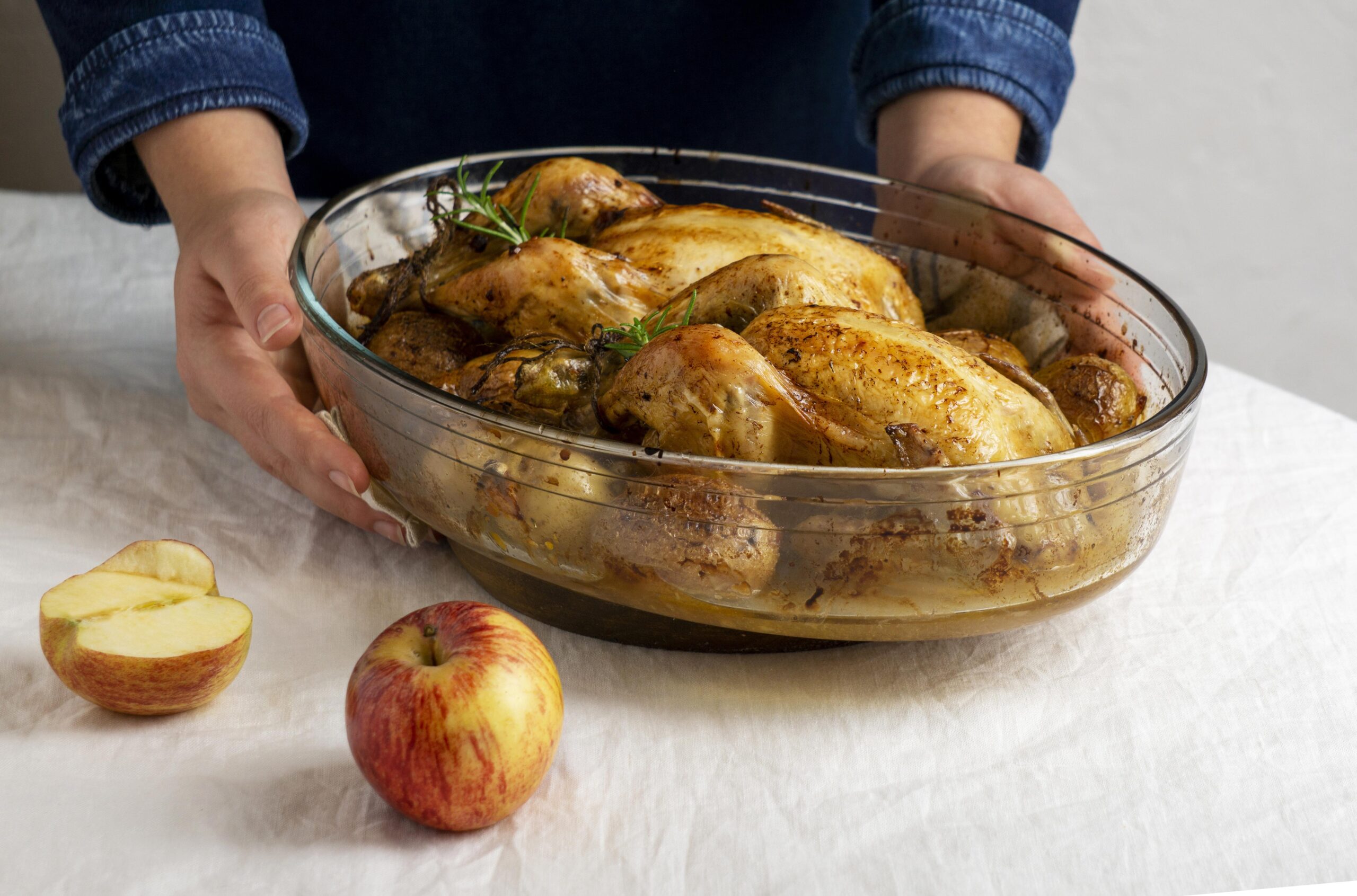
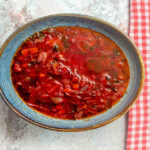


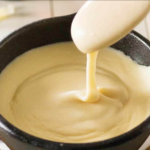
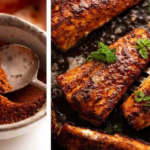
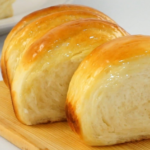
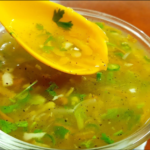

1 thought on “Perfect Chicken Brine Recipe : Moist and Flavorful Every Time”